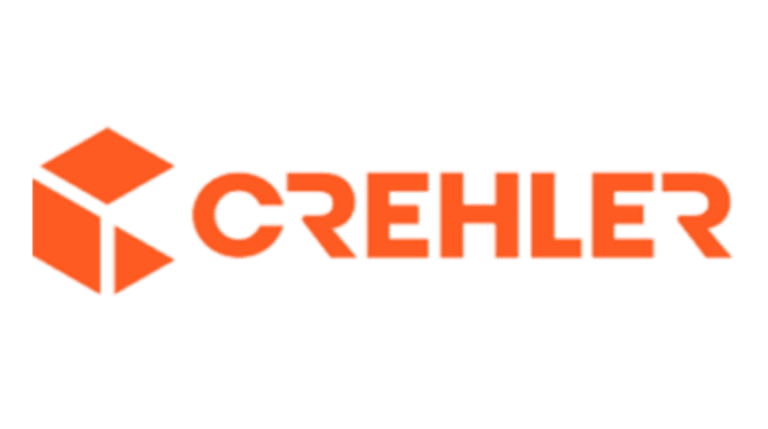Headless commerce isn’t a new approach to online sales, but it still raises many questions.
This approach frees you from the traditional constraints of “one-size-fits-all” platforms. What’s more, it promises you greater control and flexibility in creating an online shop.
We want to check if this is actually true.
In this article, we’ll explain what headless commerce is, how it works, and when it might be a perfect fit for your business.
What is headless commerce?
When you browse through products, add items to your cart, and make a purchase, you’re interacting with the front-end part of the website. This is the part that you see and interact with—the layout, design, and user interface.
Behind the scenes, there’s another part of the website. The one that is responsible for things like managing inventory, processing payments, and handling orders. This is the back-end part, which stores all the data and makes sure everything runs smoothly.
Apart but together?
With headless commerce, these two parts are decoupled, or “headless,” meaning they can operate independently.
Headless commerce separates the front-end layer from the back-end. In simpler terms, it’s like having two separate parts of your online store that work together but are independent.
This separation introduces more flexibility and control over the store. How? For example, you can change the design or layout of your website without affecting the underlying e-commerce functionality.
More tech
Headless commerce relies on APIs (Application Programming Interfaces) to connect the front-end and back-end systems.
APIs allow for communication and information sharing between those two.
Examples of using API:
- Retrieve product information from a backend database and display it on a frontend website
- Process customer orders and update inventory levels in real-time
By leveraging APIs, businesses can create a modular and flexible e-commerce architecture.
Headless commerce vs. traditional commerce
All-in-one convenience
Traditionally, online stores have been built on “all-in-one” platforms. There is nothing wrong with that as long as they are sufficient. These platforms offer a convenient way to launch your store quickly.
They handle everything from product listings to payment processing, making them a great option for businesses starting out or having simpler needs.
Here’s the beauty of all-in-one platforms:
- They’re user-friendly and easy to set up.
- You can launch your store quickly without needing a ton of technical expertise.
But what about growth?
However, as your business grows and your needs become more complex, you may start to feel limited by them.
Drawbacks of traditional platforms
- Limited flexibility
Traditional platforms often come with pre-designed templates and rigid structures. Although some offer a wide range of them, they can constrain customization options. It can be difficult to stand out from the crowd. - Dependency on vendor
You are relying on a single vendor – their services, features, and support. Any shortcomings on the vendor’s side can have far-reaching consequences for you. - Slow updates
Adding new features or making changes to your store can be a slow process with traditional platforms. - Limited integrations
Sometimes there are many options for integrating your e-commerce with third-party tools. But what to do when there is no one you are interested in? The closed nature of these systems often complicates the integration process. As a result, may be time-consuming.
Headless commerce
Although all-in-one platforms offer a solid foundation, headless takes things a step further.
Headless platforms separate the front-end (the visual storefront) from the back-end (the engine that powers everything). It allows for more flexibility and control.
Why? You can build front-end using any technology, so you have the freedom to design the store as you want.
The same applies to the backend. You may choose a back-end platform that handles best all the essential functions you need.
Communication between the two happens seamlessly through APIs.
Advantages of headless commerce
- Flexibility
Freedom to choose the best tools and technologies for each part of the store allows for creating great experiences. - Control
By separating the front-end and back-end, the business gains greater control. This control applies both to design and layout to performance optimization and scalability. - Performance
Headless commerce allows for independent optimization of each – front-end and back-end. As a result, faster and more responsive online store makes customers come back. - Easier integrations
APIs make it easy to connect your store with any third-party tool. So, you can integrate your store with a wide range of systems (e.g. analytics solutions, CRM systems, payment gateways, etc.).
Headless commerce vs. microservices vs. composable commerce
It’s important to understand how headless commerce relates to other concepts: microservices and composable commerce.
They each have distinct characteristics and focus areas, but they are related.
Headless commerce
- Focus:
Headless commerce focuses on separating the storefront and engine of your store. - Benefits:
Flexibility, customization, faster development cycles, and integration with various tools. - Think of it as:
Building your online store with separate modules for storefront design and back-end functionality.
Microservices
- Focus:
Breaks down large software applications into smaller, independent services. - Benefits:
Modularity, scalability, and independent development/deployment of functionalities. - Think of it as:
Building your online store with independent “mini-apps” that work together. It can be e.g. shopping cart service, a product management service, etc.
Composable commerce:
- Focus:
“Best-of-breed solutions”. Each component is scalable, interchangeable, and can be connected to the rest of the architecture without influencing other services that make up the application. - Benefits:
Extreme flexibility, scalability, and future-proofing through a modular approach. - Think of it as:
The overall philosophy of building with best-of-breed components, where headless commerce and microservices can be the building blocks.
How do they relate?
- Headless commerce often utilizes microservices architecture.
- Composable commerce considers headless commerce as a key component.
Headless commerce journey – where to begin?
There’s no doubt that the whole process requires careful planning. Here’s a roadmap that may help you:
Self-assessment
Check your needs, research, and ask questions. Begin with defining your business requirements and goals. Also, don’t forget about technical expertise. Assess your in-house development capabilities or explore partnering with a headless commerce development agency.
Research
Familiarize yourself with key concepts of headless commerce. Research headless commerce platforms, frameworks, and other tools. Explore case studies, articles, and resources.
Planning
Work with your development team or consult with headless commerce experts to design the architecture. Define the API endpoints, data structures, and integration points needed.
- Headless commerce experts:
Look for agencies with proven expertise in your industry and a strong understanding of your specific needs. - Online resources:
Numerous online resources are available to deepen your understanding of headless commerce. Here are a few to get you started:- headlesscommerce.org: A community-driven resource for everything headless commerce.
- MACH Alliance: A group of leading technology providers promoting open standards in headless commerce.
Development
Rely on your in-house team or start working with an agency. No matter the choice, they have to utilize best practices in coding, testing, and deployment.
Testing and QA
Benefit from manual and automated testing to identify and address any bugs or issues. Test the performance, usability, and compatibility across different devices and browsers.
Launch
Go live and monitor it closely. Gather feedback from users to introduce improvements.
Headless commerce in action
To prove headless commerce isn’t just a theoretical concept you may want to look at those success stories.
- Sephora
Everyone knows this beauty giant. They decided to leverage headless commerce to deliver a personalized shopping experience across all touchpoints. - Nike
Another giant. They wanted to create a dynamic and data-driven shopping experience for its global customer base.
Is headless commerce right for your business?
Headless commerce offers a powerful toolkit for online stores, but it’s not for everyone.
Take a look at the simple checklist below to check if it aligns with your needs.
Business goals:
- Do you want greater flexibility and control over your online store? (In the context of the design and functionality)
- Do you need (advanced) third-party tools integrations?
- Are you focused on future-proofing your e-commerce infrastructure?
Technical capabilities and resource allocation
- Do you have the technical expertise or access to the tech team?
- Are you comfortable managing and maintaining separate front-end and back-end systems?
- Do you have the resources to invest in the development and ongoing maintenance?
- Do you have the budget to cover the upfront costs of implementing a headless solution?
Scalability and growth:
- Do you expect your e-commerce business to grow significantly in the future?
- Do you need a solution that can scale and adapt to changing business requirements and market trends?
- Are you looking for a platform that can support multi-channel sales?
- Are you planning to expand into new markets or sales channels?
Customer Experience:
- Are you committed to providing your customers with seamless and personalized experiences across multiple touchpoints?
- Do you want the freedom to experiment with innovative features and technologies?
- Are you focused on optimizing performance and ensuring fast load times to improve customer satisfaction and retention?
Summary
Headless is worth considering for everyone who wants to break free from limitations and build a truly unique online store. However, it requires careful planning and resources to implement and manage effectively. A well-thought-out approach allows companies to unlock the full potential of this architecture.
FAQ
What is the opposite of headless commerce?
Traditional monolithic e-commerce platforms where the front-end and back-end are tightly coupled.
Is headless commerce good for SEO?
Headless commerce itself doesn’t directly impact SEO, but the flexibility it offers can be leveraged to optimize SEO practices.
What is a headless strategy?
A headless strategy is an approach to building applications where the front-end (presentation layer) is decoupled from the back-end (business logic).
Why is headless commerce better?
Headless commerce offers several advantages over traditional all-in-one platforms:
- Choose the best tools and technologies.
- Gain more control over the look, feel, and performance of your online store.
- Easily integrate new features and functionalities.
- Less susceptible to limitations of single vendor platforms.
- Simplified integration with various third-party tools and services.
Why use headless commerce?
Consider using it if:
- You crave a unique and differentiated online store design.
- You anticipate significant growth and need a scalable solution.
- You require advanced integrations with specific tools.
- You prioritize a future-proof e-commerce architecture.
How to build a headless e-commerce store?
Building a headless store requires careful planning and technical expertise. Here’s a simplified roadmap:
- Self-Assessment: Evaluate your needs, goals, and technical resources.
- Research: Learn about headless commerce, explore platforms, frameworks, and tools.
- Planning: Design the architecture with your development team or consult with headless commerce experts.
- Development: Build the front-end and back-end components using best practices.
- Testing & QA: Thoroughly test functionality, performance, and user experience.
- Launch & monitor: Go live, gather user feedback, and continuously improve.
What are the disadvantages of headless?
Headless commerce also has some downsides to consider:
- Complexity: Requires more technical expertise for setup and maintenance compared to all-in-one platforms.
- Cost: The initial investment can be higher due to potential development costs and integration complexities.
- Management: Managing separate front-end and back-end systems can be more resource-intensive.























